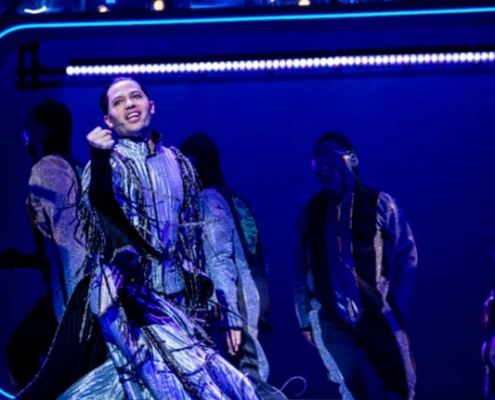“Response to ‘Animals, Aliens, and Machines’”
Selection
For the last couple of months I’ve been writing about Frozen: the Broadway Musical and of course the shorts and the second feature film that followed in the wake of “Let It Go” and its popularity. And I’d like to use Frozen now to tease out two or three points of convergence here with what our panelists talked about today, and I’m hoping I can send us in some additional directions relative to the non-human.
In the first place, I think the question of the monstrous – and the queerness of the monster – is central to thinking about both Frozen and Little Shop, and perhaps even Be More Chill. I’ve been thinking about this because of Elsa’s song “Monster,” in which she declares that the monster has been created by the outside world and not herself, but Julie you have me thinking about how we might consider the monster as someone with whom we can identify. What, in other words, might we examine as we think about the curious appeal of Audrey II’s vocals as it sings to us in the audience? How might the monster both call to us and repel us, and what might this have to do with how the monster sounds or what the monster sings?
What we’ve noted here today, as well, is that often in a musical the non-human or not-traditionally-human character has a human voice, and the sounds of that voice, its accents and its pitches, both matter a lot and are a great deal of work for the performer. (In Frozen, incidentally, this makes an appearance as Kristoff sings on behalf of his reindeer companion Sven, who is played by a human but who does not sing his own lyrics.) How, though, we might ask, does the sound of the non-human ask us to identify with it, how might it ask us to sing along or make sounds just like it? And what might this do for identifying with the non-human or identifying away from the human and with (as Fiona comes to do in Shrek) the ogre or the troll or the murderous plant intent on destroying all of humanity?
The category of the not-traditionally-human around which this panel was formed, of course, still keeps the human at the center of our inquiry. In some ways this is necessary because of the form of musical theatre, in which characters are generally asked to sing or dance, and where the movement of the human body is central. One of the fears Julie articulated in her paper is our own fear of becoming a thing, of being threatened by things and being transformed into a thing. Perhaps there is no way of thinking outside of our own human centrality to this inquiry, no way of de-centering the human as we think about what the non-human can do.
But what happens when the thing sings – when the thing is, after all, alive? When Scott McMillin in The Musical as Drama divides the temporality of musicals up into book time and lyric time, he offers us the idea that the character has an entire other life that we see within lyric time that doubles or sometimes triples the character’s life in the book. That is, characters sing about topics that they would never discuss within the book itself, and they dance or perform in ways that often the book versions of their characters don’t even know how to perform. In this way, the strangeness of the song, which operates within its own lyric time, gives us information about a character that we could not actually get in the book. I mention McMillin’s frame in order to ask us to consider how thinking about singing things and the lyric time they inhabit might prompt us to rethinking objects themselves. In other words, what is the musical life of objects? Sometimes they come to life within lyric time within musicals, and in this way give us information they couldn’t give us in the book. Might it be that musical theatre as a form has a special ability to reimagine objecthood and selfhood through its lyric time?
I wonder, finally, what these non-traditionally-human characters in musicals might have to teach us – not only about how to be better humans in our relationships with one another, with animals and objects, with the land, as Ty Defoe noted earlier this afternoon, and with the world around us – including the chemicals we swallow that modify our behaviors and attitudes – but also what they might have to teach us about how we conceive of our own being as humans.



